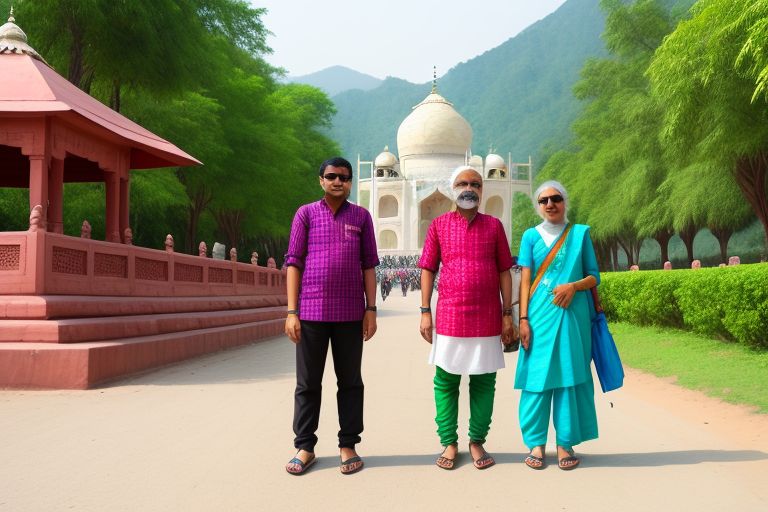Traveling to India can be an exhilarating experience filled with vibrant culture, diverse landscapes, and rich history. To ensure a smooth journey, obtaining the appropriate visa is crucial. This article serves as a comprehensive guide to the Indian tourist visa, providing essential information, application procedures, and tips to make the process as seamless as possible.
Understanding the Indian Tourist Visa
The Indian tourist visa is a document that permits foreign nationals to visit India for tourism purposes. This visa allows travelers to explore the country’s breathtaking sights, immerse themselves in its culture, and partake in various activities. Generally, the tourist visa is valid for six months, but it’s important to check the specific validity period when applying, as it can vary based on your nationality and the type of visa you choose.
Types of Indian Tourist Visas
India offers several types of tourist visas, catering to different travel needs. The most common types include:
- e-Visa: This is the most convenient option for tourists visiting India. The e-Visa can be applied for online, eliminating the need for an in-person visit to the Indian embassy or consulate. It is typically valid for 60 days and allows for two entries into India.
- Regular Tourist Visa: This visa is issued for longer stays and is ideal for travelers planning to explore India extensively. It can be issued for six months to ten years, depending on your nationality and requirements.
- Transit Visa: If you are passing through India to another destination, a transit visa may be required. This visa is typically valid for a short duration, allowing you to stay in India while in transit.
Application Process for the Indian Tourist Visa
Applying for an Indian tourist visa can be straightforward if you follow the correct procedures. Here’s a step-by-step guide to help you through the application process:
Step 1: Determine Eligibility
Before applying, check your eligibility for the type of visa you require. Ensure that you meet all necessary criteria, including your nationality, purpose of travel, and intended duration of stay.
Step 2: Gather Required Documents
Collect all necessary documents before starting your application. Typically, you will need:
- A valid passport with at least six months of validity beyond your intended stay.
- A recent passport-sized photograph.
- Travel itinerary, including flight details and accommodation bookings.
- Proof of sufficient funds to cover your stay.
Step 3: Fill Out the Application Form
For the e-Visa, complete the application form available on the official website. Make sure to fill in all required fields accurately. If you’re applying for a regular visa, download and print the application form from the respective embassy or consulate website.
Step 4: Pay the Visa Fee
After completing the application form, pay the required visa fee. Payment methods may vary depending on whether you apply online or in person.
Step 5: Submit Your Application
Submit your application either online (for e-Visas) or in person at the nearest Indian embassy or consulate. For e-Visas, you will receive an electronic visa via email once approved. If you apply for a regular visa, you may need to attend an interview at the consulate.
Step 6: Track Your Application
Most visa application portals allow you to track your application status. Keep your reference number handy to check for updates regarding your visa approval.
Common Indian Visa Questions
As you navigate the process of obtaining an Indian tourist visa, you may have several questions. To help clarify common inquiries, you can visit the INDIAN VISA QUESTIONS page at Indian Visa Questions. Here, you will find answers to frequently asked questions regarding visa types, fees, processing times, and more.
Tips for a Smooth Visa Application
- Apply Early: To avoid last-minute issues, apply for your visa well in advance of your travel dates. This will give you ample time to resolve any potential delays.
- Double-Check Requirements: Visa requirements can vary based on your nationality. Ensure you check the specific requirements for your country before applying.
- Keep Copies of All Documents: Always maintain copies of your application and supporting documents. This will be helpful in case of any discrepancies or issues during your travel.
- Stay Updated on Visa Regulations: Visa regulations can change frequently. Stay informed about any updates or changes to the visa application process before you apply.
In conclusion, obtaining an Indian tourist visa is a vital step in planning your trip to India. By understanding the types of visas available, following the application process, and staying informed about common questions, you can ensure a smooth and enjoyable journey. For a detailed overview, check out the INDIAN TOURIST VISA GUIDE at Indian Tourist Visa Guide.
